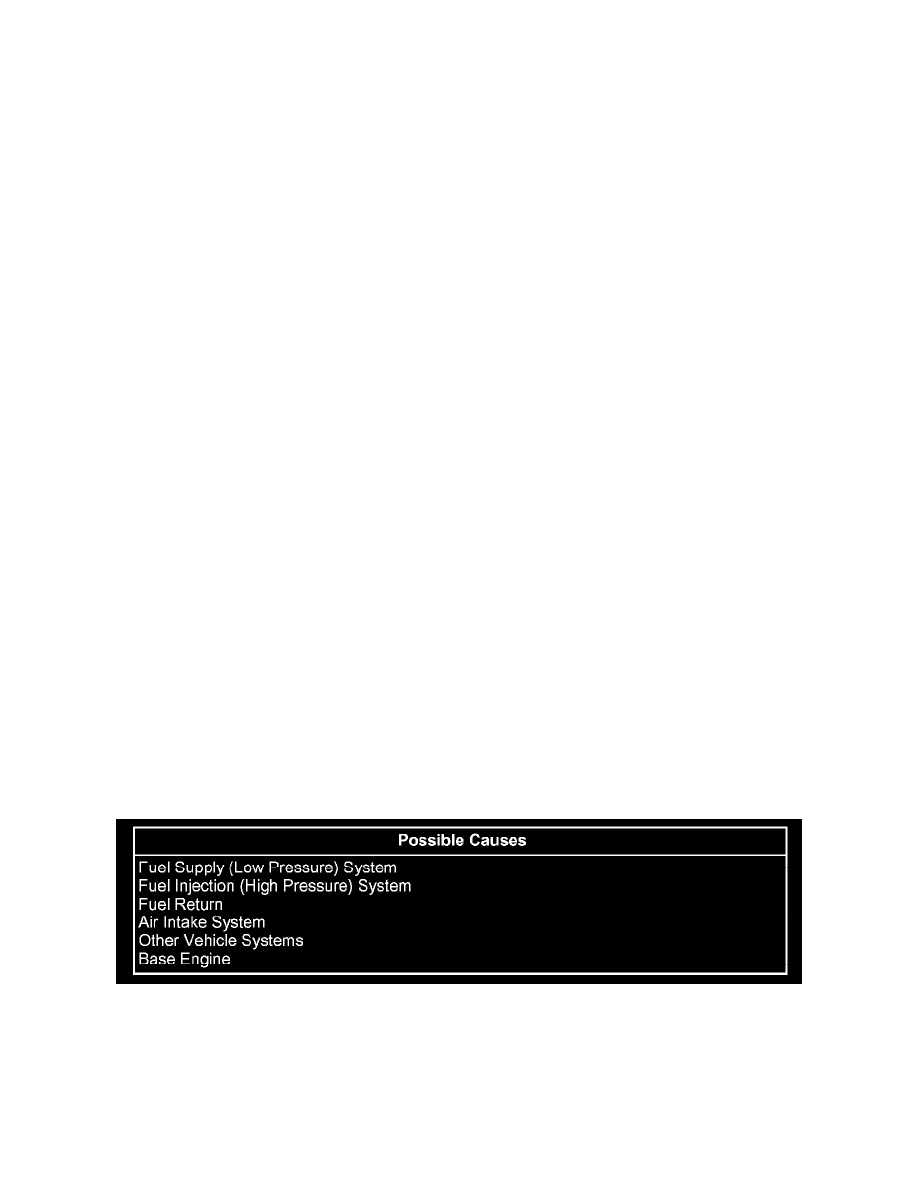RAM 3500 Truck 2WD L6-5.9L DSL Turbo VIN C (2003)

Maximum leakage allowable for all injectors combined is 160 mL (5.4 fl. oz.): taken when engine coolant temperature is greater than 82°C (180°F),
engine speed is equal to 1,200 RPM's, and fuel rail pressure is equal to 1400 bar (20,305 psi.).
NOTE:
It is critical that all HPC nuts are tightened to the correct torque. Refer to the detailed tightening information available in TechCONNECT under:
Service Info tab > 14 - Fuel System > Fuel Injection > Fuel Injector > Installation. Retest when all HPC nuts are properly torqued.
NOTE:
Any injector contributing more than 40 mL (1.4 fl. oz.) is excessive (Example: If total injector leakage is 2OOmL (6.7 fl. oz.) and blocking cylinder
# 1 reduces the leakage to 160 mL (5.4 fl. oz.), cylinder # 1 has excessive leakage).
NOTE:
Test should be repeated to confirm measurements.
12.
If the injector return from any cylinder(s) is deemed excessive:
a.
Check HPC tip for damage, replace HPC if damaged. Refer to the detailed service information available in TechCONNECT under: Service
Info tab > 14 - Fuel System > Fuel Injection > Fuel Injector > Removal/Installation. >> Go to Step # 14.
b.
If HPC tip is undamaged, replace the injector and HPC. Refer to the detailed service information available in TechCONNECT under:
Service Info tab > 14 - Fuel System > Fuel Injection > Fuel Injector > Removal/Installation. >>Verify that a quality fuel filter is used.» Go
to Step # 14.
13.
If the engine passes the previous tests and still exhibits white smoke that clears with a warm engine, check the following:
a.
Idle Time: More than 20% is excessive.
b.
Engine Temperature: Verify that the thermostat allows the engine to reach operating temperature.
c. Fuel Source (Cetane): Check with fuel supplier or try another source.
d.
Fuel Quality (lubricants/detergents): May benefit by using a fuel detergent with a lubricity additive.
e.
Winter Fuels: No. 2 diesel not blended for winter conditions.
f.
Cold Ambient: Use block heater where appropriate, limit warm-up time in winter.
g.
High Altitude: Effect will be worse with altitude and cold ambient temperatures.
h.
Refer to Service Information: Refer to the detailed diagnostic information available in TechCONNECT under: Service Info tab > 9 - Engine
> Diagnosis & Testing> Smoke Diagnosis Charts > Excessive White Smoke. >> Go to Step # 14.
14.
Repair Complete: Perform Powertrain Verification Test VER - 1 (Diesel). Refer to the detailed service information available in TechCONNECT
under: Service Info tab > 8 - Electrical/Electronic Control Modules/Engine Control Module> Diagnosis And Testing.
Section B - Engine Surges at Idle
Perform the Pre-Diagnostic Troubleshooting procedure before proceeding.
1.
DTC / Product Improvement: Check for any service bulletins related to the customer's concern or Diagnostic Trouble Codes (DTC's) present.
Follow appropriate guidelines in the diagnostic procedures outlined in TechCONNECT. Is the vehicle repaired?
a.
Yes >> Go to Step # 15.
b.
No >> Go to Step # 2.
